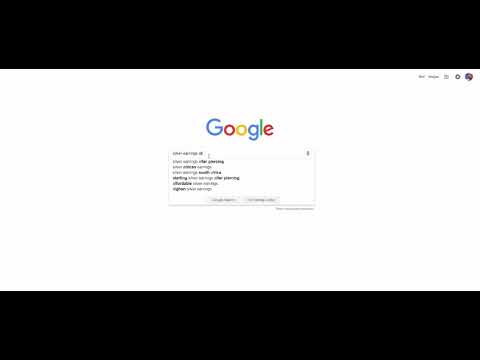This post is part of the Google Merchant Centre Guide - created by our Google Shopping Team
Google Shopping Strategy
Google Merchant Centre Fixes
- Setting Up Shipping in Google Merchant Centre
- Ads/Free Ratio in Google Merchant Centre (Free Listings)
- Availability [availability] in Google Merchant Centre
- European Article Numbers: A Complete Guide
- GTINs and Why You Need Them in Google Shopping
- Excluded Destination [excluded_destination] in Google Merchant Centre
- Google Shopping Free Advertising
- How to Use Google Product Category in Google Shopping
- How to Use Product Type in Google Shopping
- How to Fix Mismatched Value (Page Crawl) [Price]
- Invalid UTF-8 encoding: Merchant Centre Disapproved Products
- How to Exclude Products In Google Merchant Centre
Google Shopping feed optimisation is crucial in any Google Shopping campaign, as it strongly influences the performance of your Google shopping campaigns. Optimising your data for Google shopping ads involves improving product titles, descriptions, deep keyword research and good ad management.
In this post on optimising for Google Shopping Ads, Mark Tillison answers frequently asked questions about writing product titles and descriptions for Google Shopping feed optimisation.
Should I use capitals for the product title?
I’m putting the first letter of each word in the upper case. What is the best practice?
Capitalised text in product titles is fine – it’s a title, so personally I always feel that it looks nicer. It has no real impact on rankings, but don’t use ALL CAPS, as that doesn’t look professional or pretty.
If I use the same keywords in the product title for more than one product, will I be penalised by Google?
Will it only show one product? Or, will it show more than one if the keywords are relevant to the search?
You can use the same keywords in the title of multiple products. Remember that with Google shopping ads, you could show multiple ads for different products on the same site. It’s not like traditional SEO, where you’d be penalised for having duplicate titles.
However, I would recommend that you make the titles slightly different, using size or colour of some differentiating factor. This is more for users than for Google, but will help with some more specific search queries.
Should I use punctuation in Google Shopping product titles?
What about using commas, full stops or hyphens to separate words and phrases?
I have read and seen a lot about product title SEO. How many keywords should be in the product title for Google shopping title optimisation? Punctuation is fine and won’t affect rankings as long as you don’t use it excessively.
Optimising product descriptions for customers vs Google?
I have read that the title needs to be readable and appeal to a potential customer reading it.
Of course, the product title and descriptions need to be optimised for Google, to present the right Shopping ad for relevant searches. But, is it important to balance that? Yes, you’re optimising for search engines, but humans have to come first. If it looks awful or spammy, users are less likely to click on it.
Avoid over-stuffing shopping product titles with keywords too much, unless it flows naturally and makes sense to a customer. If you need to, use the Google shopping feed description to include more keywords, information and data about the product itself and its features, design attributes or function.
Should company information be included in the product title or description?
Information about the company, its ethics, foundation, history, owners or staff will have little or no impact on how Google Shopping matches your ads to search queries, or the click-through rate (CTR) your ads achieve.
However, if there are particular words or phrases included in that part of the description that customers do search for, it makes sense to include it.
Those terms might relate to the company or to the branding of the product. For example, where the product is made, whether it’s ethically sourced, or socially responsible. You would need to research to find out what customers search for and what terms to include. This is all part of the Google Shopping optimisation process.
Personally, I believe that if the information is already included in your Google shopping feed, it probably won’t do any harm to leave it in there. However, I wouldn’t invest time writing new content unless my research suggested that it might match search queries.
What to include in your product titles and descriptions
You need to consider what users will be searching for that you would want to match.
This example is for a specific design of earrings:
- Small
- Delicate
- Banana leaf
- Knot
- Sterling silver
- Tribal
- Thailand
- Jewellery
It could therefore match:
- Sterling silver earrings
- Silver earrings
- Small silver earrings
- Delicate earrings
- Delicate silver earrings
- Banana leaf earrings
- Banana leaf silver earrings
- Tribal silver earrings
- Tribal design silver earrings
- Tribal design earrings
- Leaf earrings
- Silver leaf earrings
- Thailand earrings
- Silver earrings thailand
- Banana leaf earrings thailand
- Banana leaf jewellery
- Silver banana jewellery
- Silver knot earrings
- Sterling silver knot earrings
- Knot earrings
- Leaf knot earrings
- Banana leaf knot earrings
And a multitude of other variations and combinations.
You can research what queries people type in to Google, to get more ideas by using Google predictive search. I made a quick video to show you how:

There more specific the search query is, the more likely it is that you’ll make a sale – assuming that the earrings match what they’re looking for, of course!
That means that the more descriptive your Product Title and Product Descriptions are, the more chance you have of matching a specific query.
- Google Shopping Ads will show for a more diverse range of queries, attracting more clicks
- The cost per click (CPC) will usually be lower for more specific queries
- You’ll attract more clicks and should make more sales through Google Shopping as a result
Is it important where keywords and phrases appear?
Should keywords be at the beginning of the product title and does it matter where they are in the description?
As we’re talking about very specific search terms, proximity to the beginning won’t have as great an effect, so I wouldn’t worry about it too much. It won’t have a significant impact where keywords are placed, as long as the words are in there.
Remember that it is most important to write this for a human and that it should be legible and compelling. Google will work the rest out automatically.
What percentage and emphasis should I put on keywords vs readability?
How important is the general information to gain customer buy in and trust?
Don’t worry too much about calculating a percentage of keywords versus “content”.
As long as the product title and product description make sense to a searcher and they’re compelling, you’ll be fine.
You can use as many of the keywords and phrases as you like as long as they’re relevant and make sense in your content.
The product title is more important than the product description. Use your primary keyword(s) in there and remember that this is the bit that most customers will see in your Google ad products.
Should I match keywords to the product title?
And how important is it to have the keyword at the beginning rather than the end?
Yes, there is an element of importance when placing terms closer to the beginning of the title, but this is more for customers and optimising the click-through rate (CTR) than for helping your products to match a particular search query.
What is the best strategy – using one keyword for every product or different keywords for each product?
If you think about the customer first and, more specifically, what they’re typing in to Google, it is clear that you should focus the title and description on what is unique or different about each product.
Following this strategy, your Google Shopping ads are more likely to show the right product for the right search query. That will make your clicks more relevant and more likely to convert in to sales.
You can still include the more generic keywords in all products, of course. For example, if every product is a set of sterling silver earrings, you absolutely should include that in the Product titles and descriptions. Then consider the more specific elements to make each product more unique; size, shape, style, design, inspiration, purpose and so on.
Finally, you don’t need every single phrase intact in your product title or product description.
For instance, don’t try to include “earring from Thailand”, “silver banana leaf earrings”, or “delicate silver earrings” as intact phrases. The product description will just look awful. Use intact phrases where it makes sense, but otherwise just the individual words or parts of a phrase are fine. Google will work it out and still match relevant queries to your Google product ads.
The benefits of product description and product title optimisation not only increases traffic and impressions, it can increase conversions and grow revenue.







